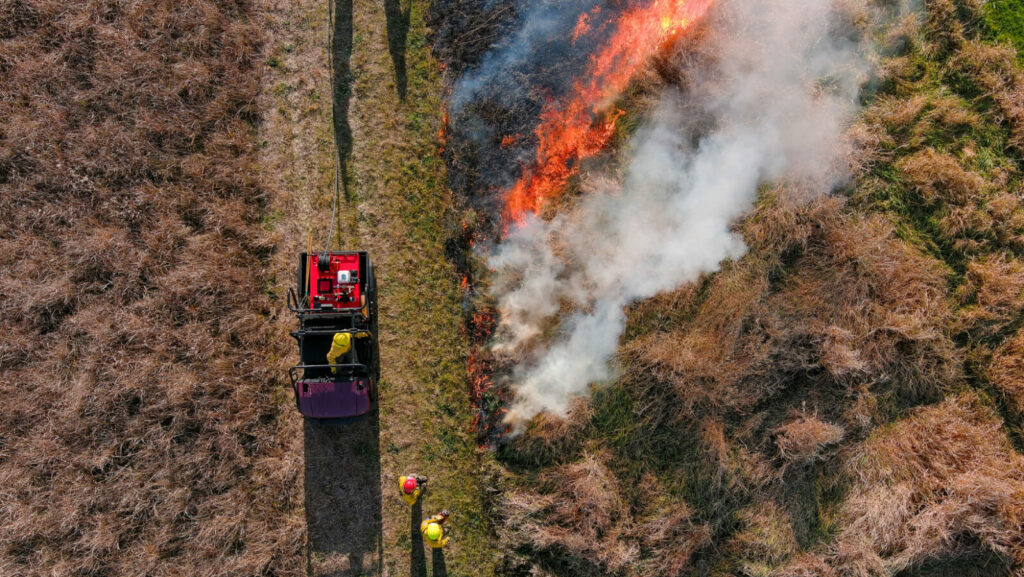Fall burn season


There are many benefits of controlled fire in natural areas. It’s a tool the Bur Oak Land Trust crew uses to decrease the spread of invasive species, improve soil health for prairies and encourage new plant growth and remove excess leaf litter and other natural fuel to prevent dangerous fires. This season, burns were done at four Bur Oak preserves and two other Iowa land trust preserves spanning nearly 200 acres of land.
BELGUM GROVE PRESERVE

This is the fourth year in a row the pond and dam and west hillside at Belgum Grove has been burned. Annual burns are particularly important here because of the aggressive invasive reed canary grass.
The crew is burning these units annually to put pressure on reed canary grass, knocking it back so they can then overseed the land with native wetland-prairie grasses, forbs (flowering plants) and sedges.
Burning this frequently will also reduce invasion by woody species, keeping the cover more herbaceous. Native herbaceous cover is better at stabilizing soil from water erosion and better at processing excessive nutrient runoff from cropland, ideally keeping the water in the pond from being more polluted.

BIG GROVE PRESERVE

The burns at Big Grove Preserve took a few days to finish based on weather conditions. The areas burned are part of a Natural Resources Conservation Service (NRCS) program called Environmental Quality Incentives (EQIP).
This program provides technical and financial assistance to certain landowners to address natural resources concerns like water quality and soil health.

CORRIELL NATURE PRESERVE

North Prairie
Corriell Nature Preserve was acquired by Bur Oak in early 2022 and this year was the first time the north prairie was burned.
This is the first effort to restore the prairie from a brome field to native sand prairie species. The great native eastern prickly pear cactus populations in this area suggest it has strong potential for restoration.
South Anabranch
This was also the first year the south anabranch unit was burned. The south anabranch wetland was burned as a kind of experiment to see what native species will pop up when fire wipes the slate clean.
In the spring, any seeds or existing native plants will get a jumpstart ahead of the reed canary grass because the soil will warm up faster as it’s exposed to heat from the sun earlier than if the grass was covering it.
After this burn, Land Steward Sarah Lawinger walked the unit and found many snakes sunning themselves in the black.
“I’m personally excited to explore the unit in the early spring,” she said, “to see if we can find other species of herps – frogs, turtles and salamanders – more easily since the ground will be more exposed.”

TURKEY CREEK NATURE PRESERVE

The south prairie at Turkey Creek Nature Preserve was last burned about three years ago. This interval replicates a typical fire return for the tallgrass prairie.
The crew burns 1/3 of the prairies at Turkey Creek annually, making sure to leave the other 2/3 for overwintering habitat for wildlife, especially the endangered rusty patched bumble bee. Units are burned in the late fall after the insects have gone underground.

PARTNERSHIPS

This season the crew partnered with Iowa Natural Heritage Foundation to burn 89 acres at their Indiangrass Hills property in Iowa County.
They also partnered with The Nature Conservancy in Iowa, the Iowa Department of Natural Resources and Louisa County Conservation, to burn 68 acres in Louisa County.
Conservation partnerships are an ideal way to improve more land in Iowa and help our crew gain experience with different kinds of land management projects.


